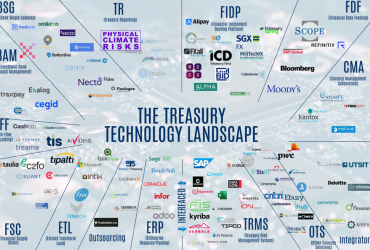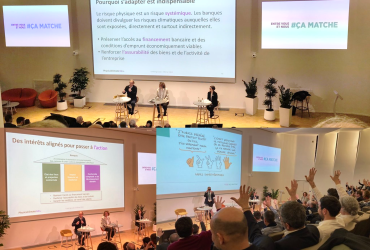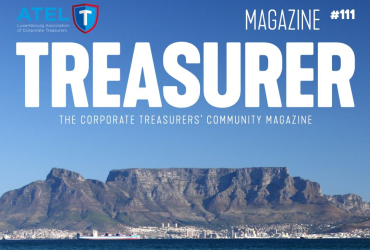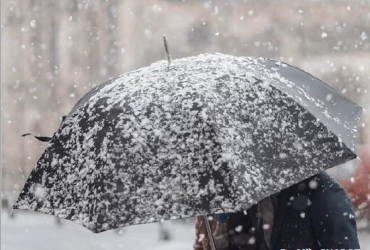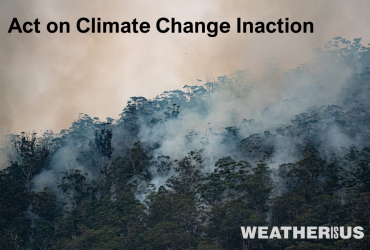Act on Climate Change Inaction
Key words: Climate change, physical risks, seasonality, risk mapping
By Miia Chabot, Research & Development Director
07/03/2022
Since Marc Carney’s now well-known tragedy of the horizons[i] a few years ago, much of the attention has been focused on transition risk – the risks posed by the rapid decarbonisation of the global economy. Yet at present, political agreements have not been followed by action, and the world is continuing on a path of substantial climate change.
Is it a lack of motivation[ii]? Is the complexity of climate phenomena, as well as the combination of factors needed to understand the issues at stake that prevents progress? Should the lack of involvement of the education sector be pointed out[iii]?
Inaction and lack of commitment to greenhouse gas reductions are driving the development of the “physical risks” of climate change. These risks[iv]refer to the financial impact of gradual changes in climate and more frequent abnormal or extreme weather events. Physical risk includes higher temperatures, floods, droughts, limited water availability, or sea level rise.
These physical risks are present in our daily lives[v], they impact our economies and challenge traditional risk management models. Year after year, new records are being set[vi]. Year after year, we wonder about the solutions to be found.
The development of physical risk measures for use at the level of a company, sector or economy requires a major effort. It involves bringing together meteorologists, climate scientists, economists and risk managers. In this case, the challenge is not just one of ego or motivation.
Economists investigate the existence of non-linear phenomena within seasonal processes, and their investigations have taken them far in the implementation of sophisticated tests and regression models. Meteorologists and climatologists have scientific expertise on the global scale of climate change. The granularity of the data available to them is huge and now requires artificial intelligence-based data reduction tools. Risk managers have developed flexible and innovative risk mapping tools, complemented by net-zero risk hedging strategies.
How can they work together?

Photo Credit : Marcus Spiske
Never before have we needed so many hybrid profiles, who cannot stand in silos and are passionate about cross-disciplinary work. The keys to success lie in combining expertise[vii].
In order to carry out a mapping of physical risks, the risk manager will seek to clearly define the scope of the business and the physical risks that make it vulnerable[viii].
If we look at the electricity demand of French households in recent years, the most prominent risks have been temperature anomalies, the occurrence of extreme events such as floods, heat waves, cold waves and storms.
The economist will explore the seasonality[ix] of this demand, and its implications[x]?
Based on the findings, the most suitable model to assess the impact of physical risk on electricity demand will be identified.
Meteorologists and climatologists will provide the climate data[xi], which they will have aligned with the economic data. They will have worked out the measurements of climatic anomalies and extreme events on the basis of the WMO’s classic recommendations.

Correlations of French Electricity Demand with Temperature Anomalies, the Occurrence of Floods, Extreme Events and Storms over the recent period, before the beginning of the Ukrainian conflict.
The scientific collaboration of these specialists allows us to see the importance of physical risks in our everyday lives (Fig. 1.).
For all the companies that distribute or produce electricity, the next step is to involve financiers in order to put in place, on the basis of this scientific work, better adapted financing, or hedging and smoothing solutions, to improve the resilience of these companies to physical risk, to provide concrete solutions for adapting to climate change... while waiting for the commitments to reduce greenhouse gases to have any impact on the climate, which unfortunately will not be the case for another 20 or 30 years, regardless of the scenarios envisaged by the IPCC[xii].
Read more about our work:
By Dr. Jean-Louis BERTRAND – Feb, 8, 2024
By Dr. Miia CHABOT- October 2022
By Dr. Miia CHABOT- 27/03/2022
[i] Carney, Mark (2015), Breaking the tragedy of the horizon, Bank of England, https://www.bankofengland.co.uk/speech/2015/breaking-the-tragedy-of-the-horizon-climate-change-and-financial-stability
[ii] Markman Art (2018), Why People Aren’t Motivated to Address Climate Changes, Harvard Business Review, https://hbr.org/2018/10/why-people-arent-motivated-to-address-climate-change
[iii] Galdon et al. (2022), Business Schools must do more to address the climate crisis, Harvard Business Review, https://hbr.org/2022/02/business-schools-must-do-more-to-address-the-climate-crisis
[iv] Physical risk framework, University of Cambridge & ClimateWise, https://www.tcfdhub.org/wp-content/uploads/2019/07/CISL-Climate-Wise-Physical-Risk-Framework-Report.pdf
[v] Bertrand and Parnaudeau (2017), Severe weather threatens businesses. It’s time to measure and disclose the risks. https://store.hbr.org/product/severe-weather-threatens-businesses-it-s-time-to-measure-and-disclose-the-risks/H03W8W
[vi]https://www.nytimes.com/2022/01/12/climate/nyt-climate-newsletter-temperature-records.html
[viii]Hopkin, Paul (2018), Fundamentals of Risk Management
[ix] Hylleberg et al. (1990), Seasonal integration and cointegration, Journal of Econometrics, https://www.sciencedirect.com/science/article/abs/pii/030440769090080D
[x] Dias-Emparanza (2014), Numerical distribution functions for seasonal unit-root tests, Numerical distribution functions for seasonal unit root tests, https://www.sciencedirect.com/science/article/abs/pii/S0167947313001047
[xi] https://www.noaa.gov/, https://www.catnat.net/
[xii] IPCC science report: climate change unequivocal, human influence at least 95% certain, European Commission, https://ec.europa.eu/clima/news-your-voice/news/ipcc-science-report-climate-change-unequivocal-human-influence-least-95-certain-2013-09-27_en#:~:text=that%20human…-,The%20United%20Nations%20Intergovernmental%20Panel%20on%20Climate%20Change%20(IPCC)%20presented,activities%20are%20the%20principal%20cause.
About the authors
Founded in 2019 by a team of corporate risk management experts and climate scientists, Weatherisus operates from Angers and London, offering data-driven analysis and advice, and financial protection against climate risks.
We engage with companies to identify the climate risks they face
From supply chain to sales to end customers, we analyze these risks based on companies’ business data and our own databases, define the specific characteristics of each climate risk, and assess the short- and medium-term financial consequences to facilitate decisions.


